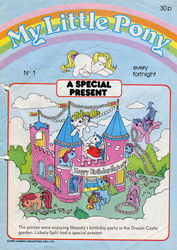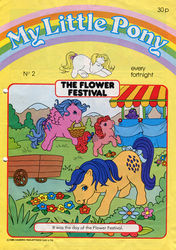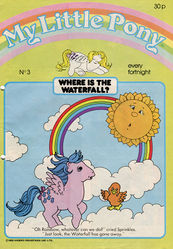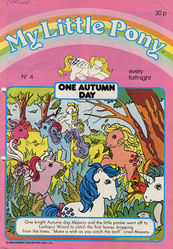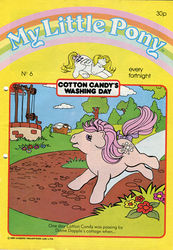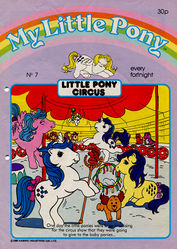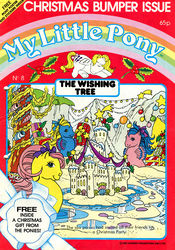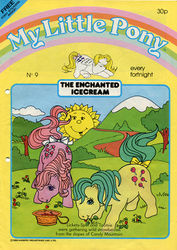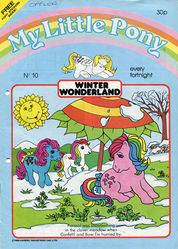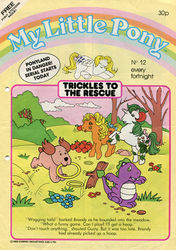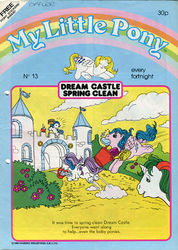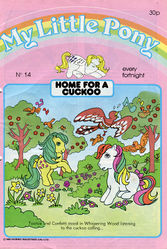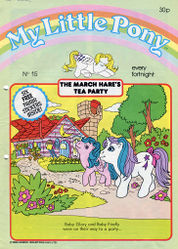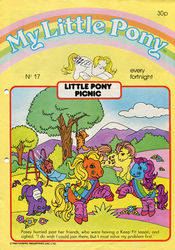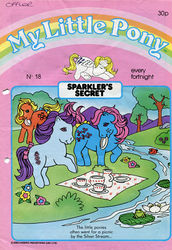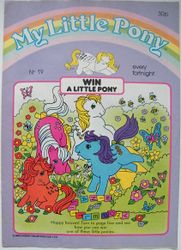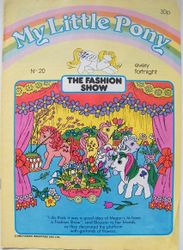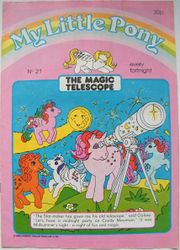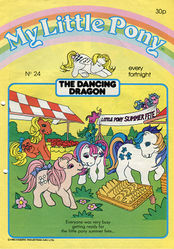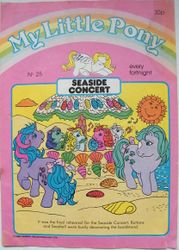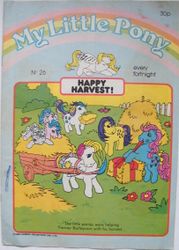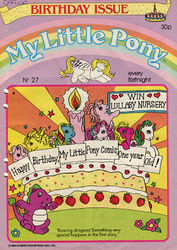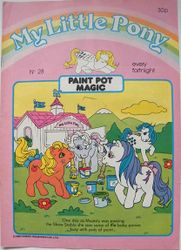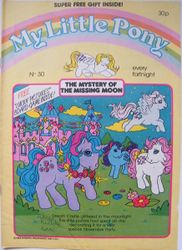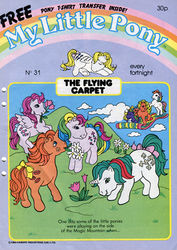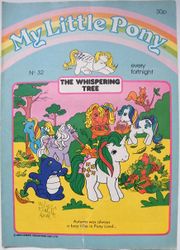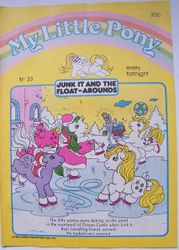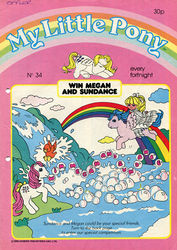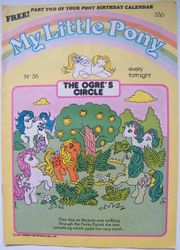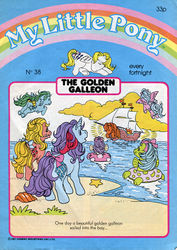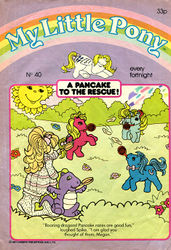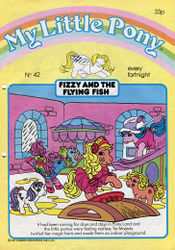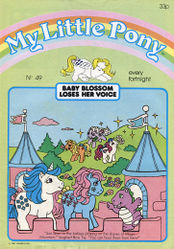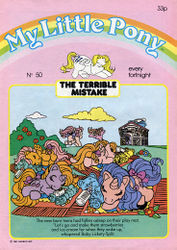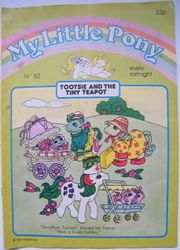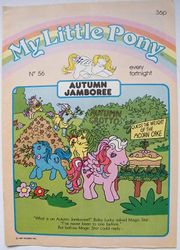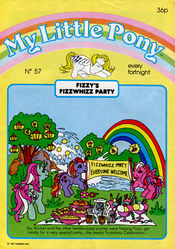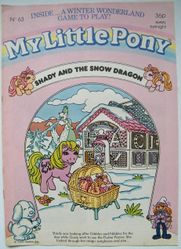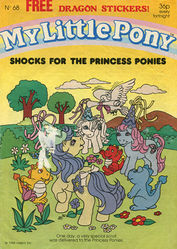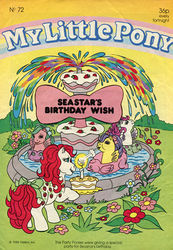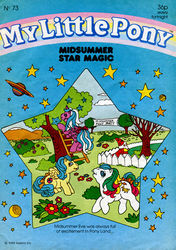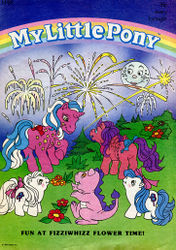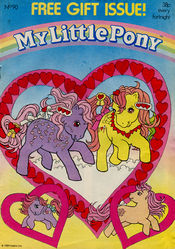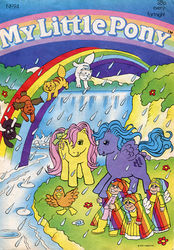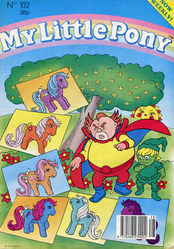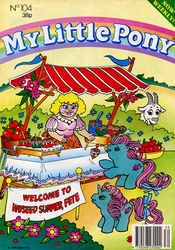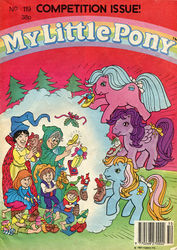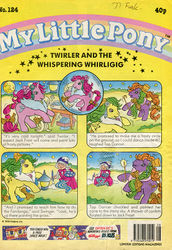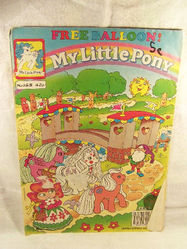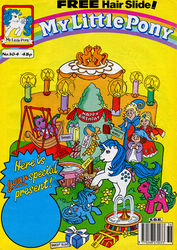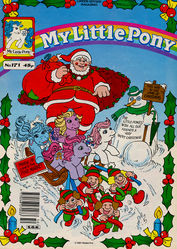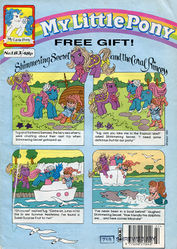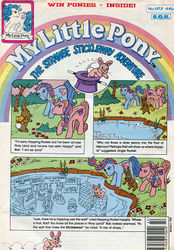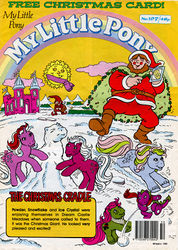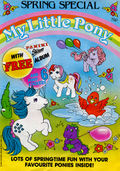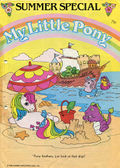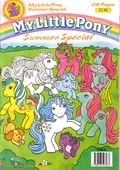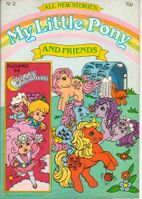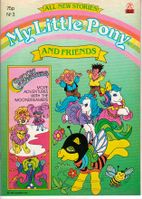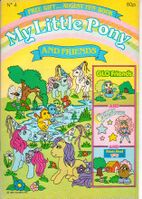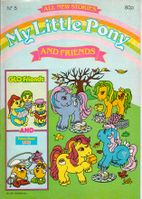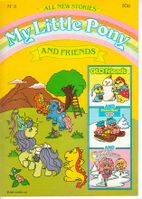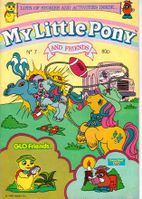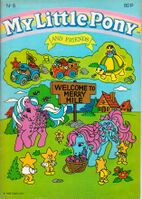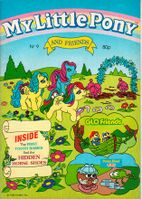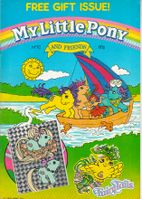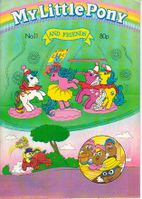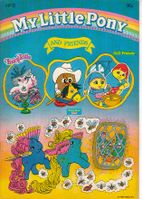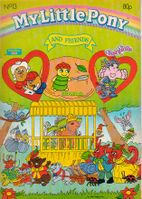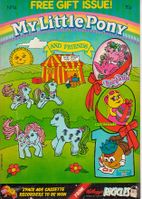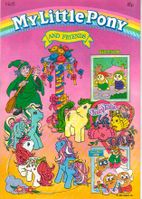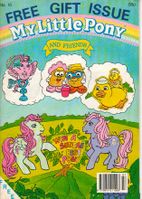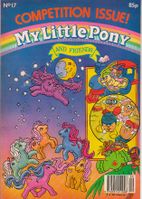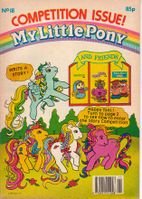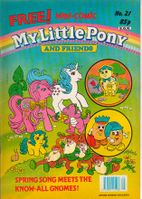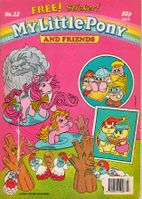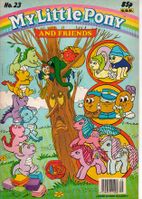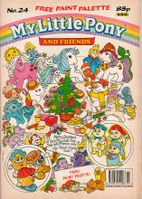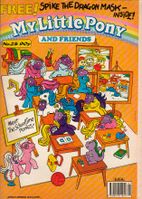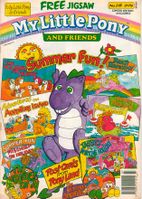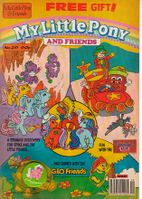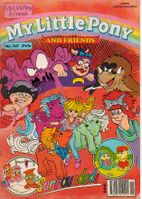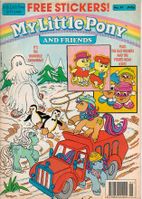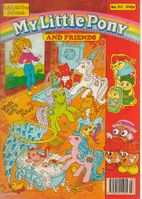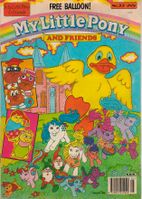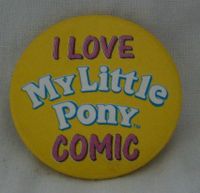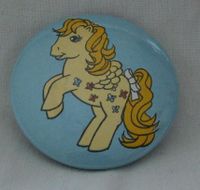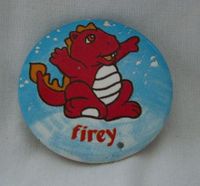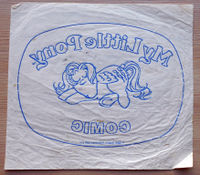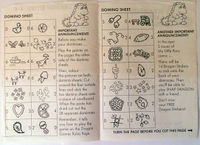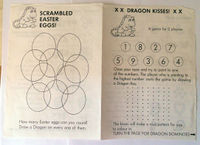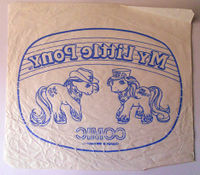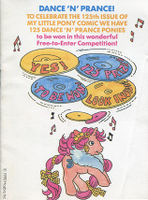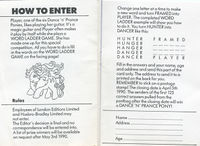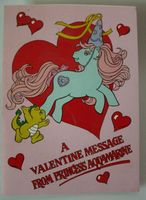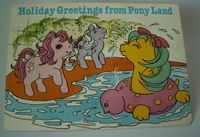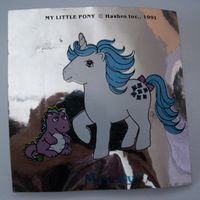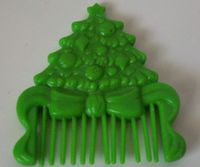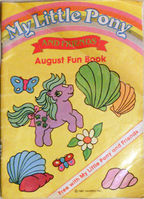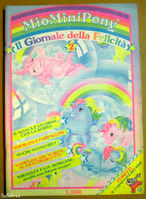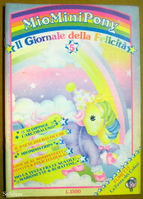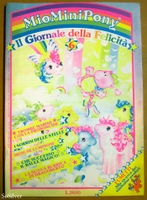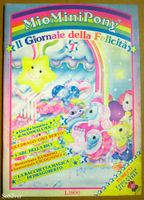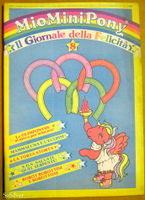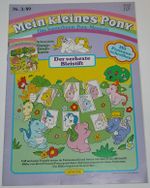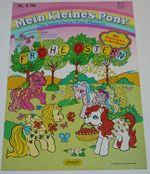G1 Comic Books
The UK had an extensive run of G1 MLP comic books, featuring stories, puzzles, Activity Club pages, special contests, and more. Two separate comic books, My Little Pony and My Little Pony and Friends, ran at the same time. My Little Pony and Friends included comics about the Moondreamers, Potato Head Kids, Fairy Tail Birds, and GLO Friends in addition to stories about the ponies.
Contents
History
The first comic, called simply My Little Pony (1985 - 1993) had a run of 223 issues. A second comic book, My Little Pony and Friends (1987 - 1994) had 51 issues.
The comics were usually produced fortnightly (every two weeks), though sometimes they switched to a weekly schedule. The two comic runs shared a common continuity, with the events of one series often being referred to in the second series. My Little Pony and Friends outlasted My Little Pony by about six months.
London Editions Limited, later renamed Fleetway Editions Limited, published both comic books. Judith Laverty was the editor of My Little Pony from at least 1988[1] until 1993 when the comic was discontinued. Martin Gray was the editor of My Little Pony and Friends from at least 1992 until 1994. Samantha Scattergood was in charge of Advertising for My Little Pony and Friends. Unfortunately the writers and artists were not credited in the comics. The only confirmed contributor is Mike Wild (writer) who started in 1988.[1]
Other European countries, such as a Germany, Finland, and Holland, also had comic books. The stories and illustrations were generally the same as in the UK comics, translated into the appropriate language. (These comic books were not released in the same order as the UK comics, however, and not every story made it to other countries.) Italy had a unique comic book with original stories and illustrations rather than reused London Editions stories. The United States and other non-European countries did not have any comic books at all.
Comic Continuity
Although they featured many of the same pony characters as the television shows, the comic books were clearly set in their own continuity.
Some of the differences from the cartoons:
- Almost every pony had magic, not just unicorns.
- Unicorns did not have the ability to wink (teleport).
- Majesty, never seen in animated form, was in almost every comic.
- The ponies never moved into Paradise Estate, they just used it as a vacation home.
- Many of the pony personalities were different. Wind Whistler was rather silly, Shady was more confident, etc.
- Larger cast of ponies and a recurring cast of non-pony characters.
The comic book universe shares many similarities with the G1 backcards. Most ponies have whatever character traits and magical abilities they had in their backcard story. (Medley can make the sound of a harp by waving her tail, for example, and Cotton Candy has a sweet tooth for flowers that gets her into trouble.) The comics fit in the same continuity as the UK children's books published by World International Publishing Limited, such as The Stolen Shadow, The Cross Weather Witch, and The Man in the Moon.
Almost all Year 2 and Year 3 ponies appeared in the comics, even ponies who were never sold in the UK. By Year 4 most of the newly introduced ponies were ones available in local shops.
Both magazines eventually switched from the dragons-and-castles fantasy world of early G1 to the more modern world of My Little Pony Tales.
Non-Pony Characters
The comics featured many allies and enemies of the little ponies.
My Little Pony Comic Covers
- My Little Pony Comic gallery
My Little Pony Comic Seasonal Special Covers
- Spring Specials gallery
- Summer Specials gallery
- Winter Specials gallery
My Little Pony and Friends Comic Covers
- My Little Pony Comic gallery
Free Gifts (from either comic)
- G1 Comic Free Gift gallery
Comb (also available with Merry Treats)
Italian Comics
German Comics
See also
References
